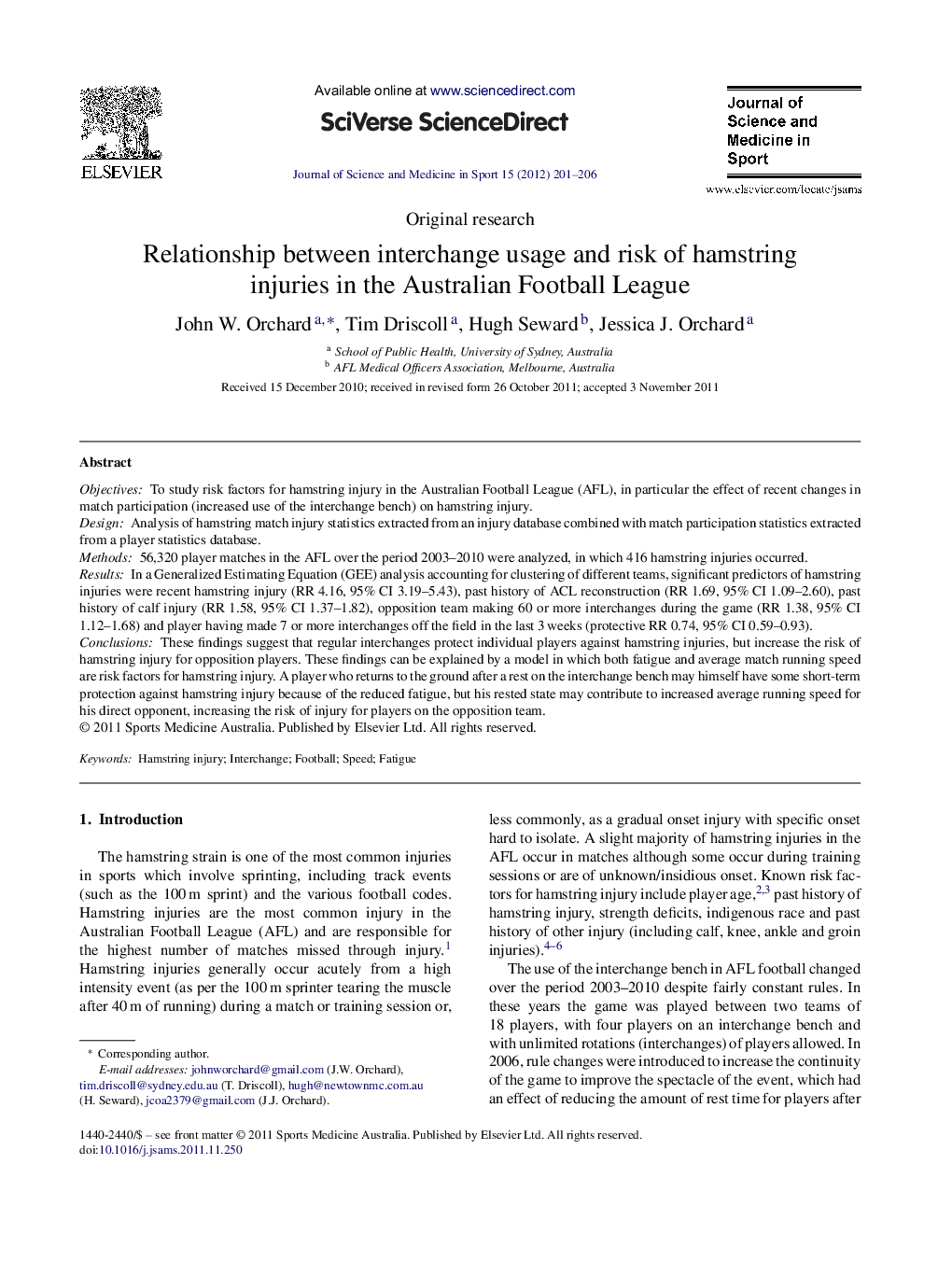| Article ID | Journal | Published Year | Pages | File Type |
|---|---|---|---|---|
| 2708068 | Journal of Science and Medicine in Sport | 2012 | 6 Pages |
ObjectivesTo study risk factors for hamstring injury in the Australian Football League (AFL), in particular the effect of recent changes in match participation (increased use of the interchange bench) on hamstring injury.DesignAnalysis of hamstring match injury statistics extracted from an injury database combined with match participation statistics extracted from a player statistics database.Methods56,320 player matches in the AFL over the period 2003–2010 were analyzed, in which 416 hamstring injuries occurred.ResultsIn a Generalized Estimating Equation (GEE) analysis accounting for clustering of different teams, significant predictors of hamstring injuries were recent hamstring injury (RR 4.16, 95% CI 3.19–5.43), past history of ACL reconstruction (RR 1.69, 95% CI 1.09–2.60), past history of calf injury (RR 1.58, 95% CI 1.37–1.82), opposition team making 60 or more interchanges during the game (RR 1.38, 95% CI 1.12–1.68) and player having made 7 or more interchanges off the field in the last 3 weeks (protective RR 0.74, 95% CI 0.59–0.93).ConclusionsThese findings suggest that regular interchanges protect individual players against hamstring injuries, but increase the risk of hamstring injury for opposition players. These findings can be explained by a model in which both fatigue and average match running speed are risk factors for hamstring injury. A player who returns to the ground after a rest on the interchange bench may himself have some short-term protection against hamstring injury because of the reduced fatigue, but his rested state may contribute to increased average running speed for his direct opponent, increasing the risk of injury for players on the opposition team.
